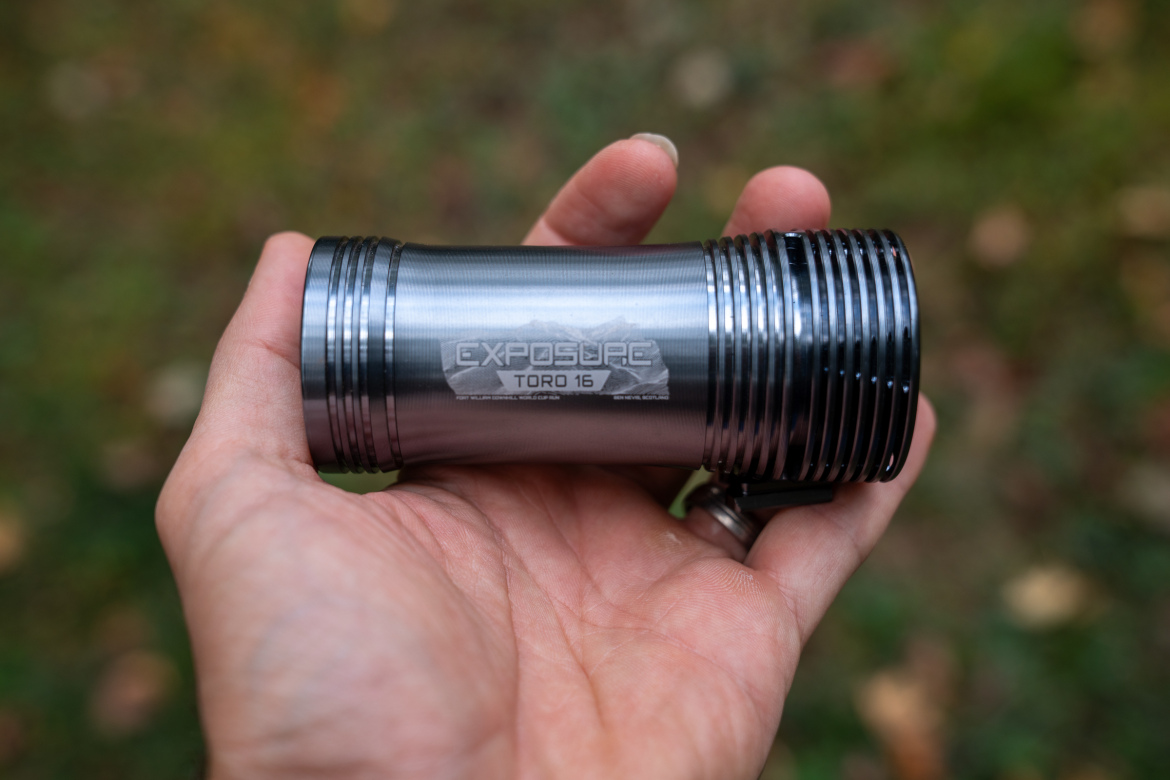
For residents of the USA and Canada, let this be your warning — Daylight Saving Time ends one week hence. I ride at night year-round, so I’m not too sad about it. I also have a secret weapon: the Exposure Toro 16 bike light. It’s a bright, high-quality light with a few tricks up its sleeve to make riding at night as seamless as riding during the day.
Exposure Toro 16 key specs
- 7 programs with various brightness settings
- Three LED bulbs
- Round beam pattern
- 12,000 mAh battery for 2-3 hours of battery life on high
- IP67 waterproof rating
- USB-C charging
- Weight: 260.7g as tested (not including handlebar mount)
- Price: $385
- Buy from Exposure Lights
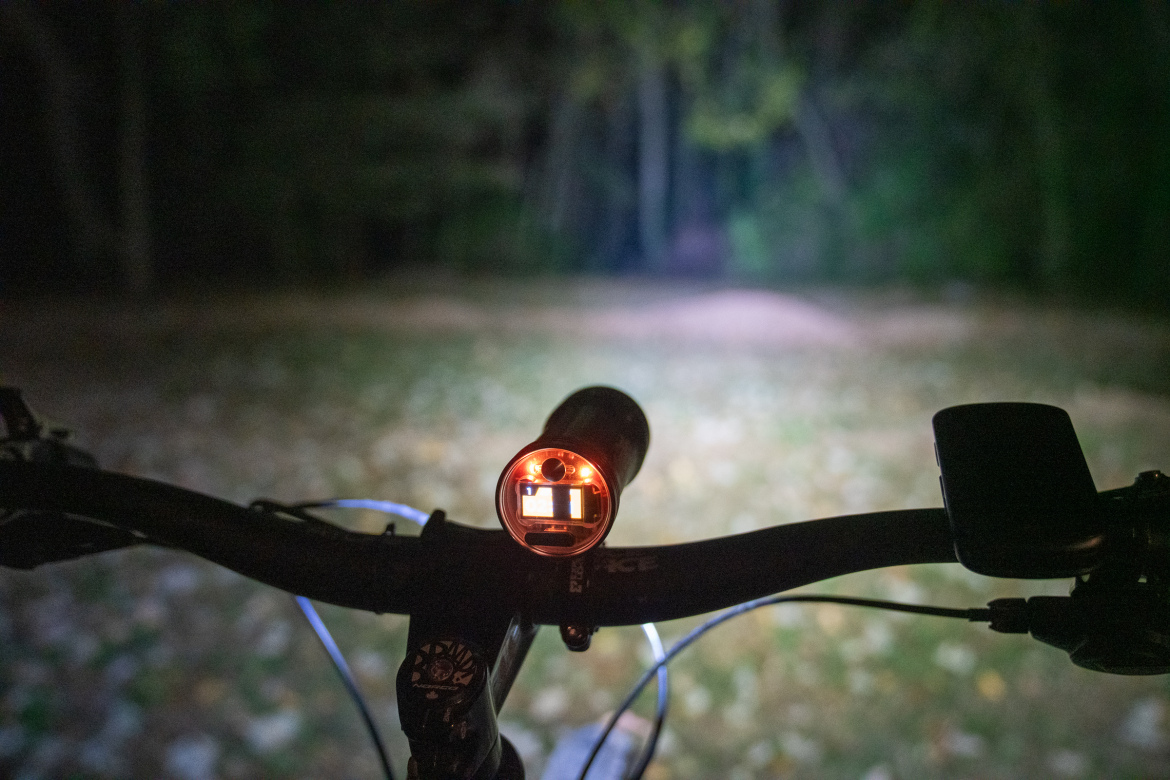
This light adjusts based on how fast and rough the trail is
There are dozens of bike lights on the market, and at a basic level, they’re all designed to provide a certain amount of light in a particular beam pattern for a certain amount of time. That stuff is important, and I’ll get to it, but what’s most interesting about the Exposure Toro 16 is that it automatically adjusts the light output — brightness — based on conditions.
Exposure calls this feature Reflex 2.0 and says it uses “3D digital accelerometers including gyroscope and thermistors” to determine the optimal brightness at any given point during the ride. This is a great idea, and in fact, riders have been asking for this feature since at least 2011. Still, I was skeptical that it would actually work as advertised.
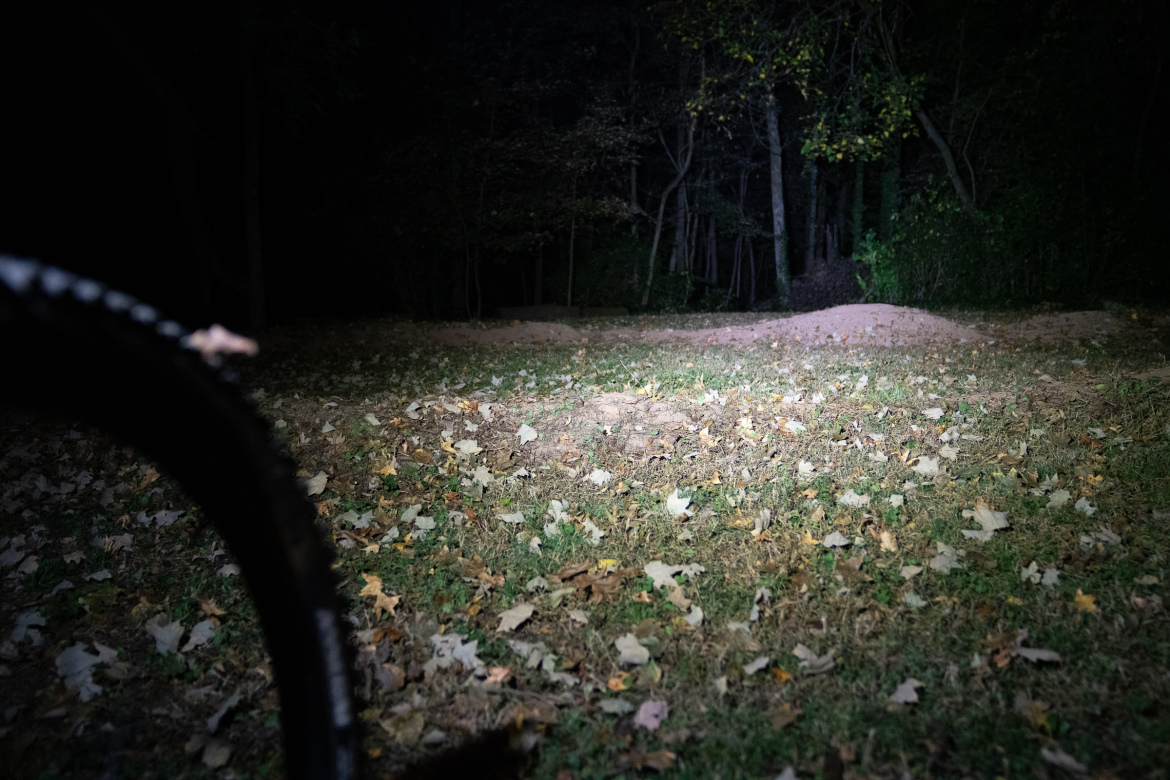
According to the product documentation, the Toro 16 needs about 20 minutes to learn your riding style. Once it’s calibrated, the light brightens whenever you speed up significantly, for example, when dropping into a descent. Based on my tests, I can confirm the change in brightness is immediately noticeable as you speed up, and it definitely helps you see farther down the trail.
Once the trail begins to climb again and your speed mellows, the light dims. In my experience, this transition from bright to dim isn’t quite as abrupt or noticeable as it is in the other direction. Many light companies use a similar trick to save power, where they gradually dim the light output over time, giving eyes a chance to adjust to lower light levels.
When you’re completely stopped, the light dims further. As soon as you start moving, the light automatically brightens again.
Depending on what your ride looks like, the Toro 16 will provide about three hours of runtime on a full charge in the brightest Reflex mode. This mode delivers up to 3,850 lumens of light, and if that’s overkill, there are more conservative modes that deliver a longer average runtime at a lower maximum brightness.
Share your Exposure Toro 16 review
Exposure warns against using Reflex mode on the road because “the output can dazzle other road users.” I suspect this would also drain the battery very quickly, especially since road speeds tend to be much higher than trail speeds, which could cause the light to run on full brightness unnecessarily.
The $549.99 Garmin Varia Vue is another bike light that adjusts its brightness based on your speed, though it’s limited to just 550 lumens on high.
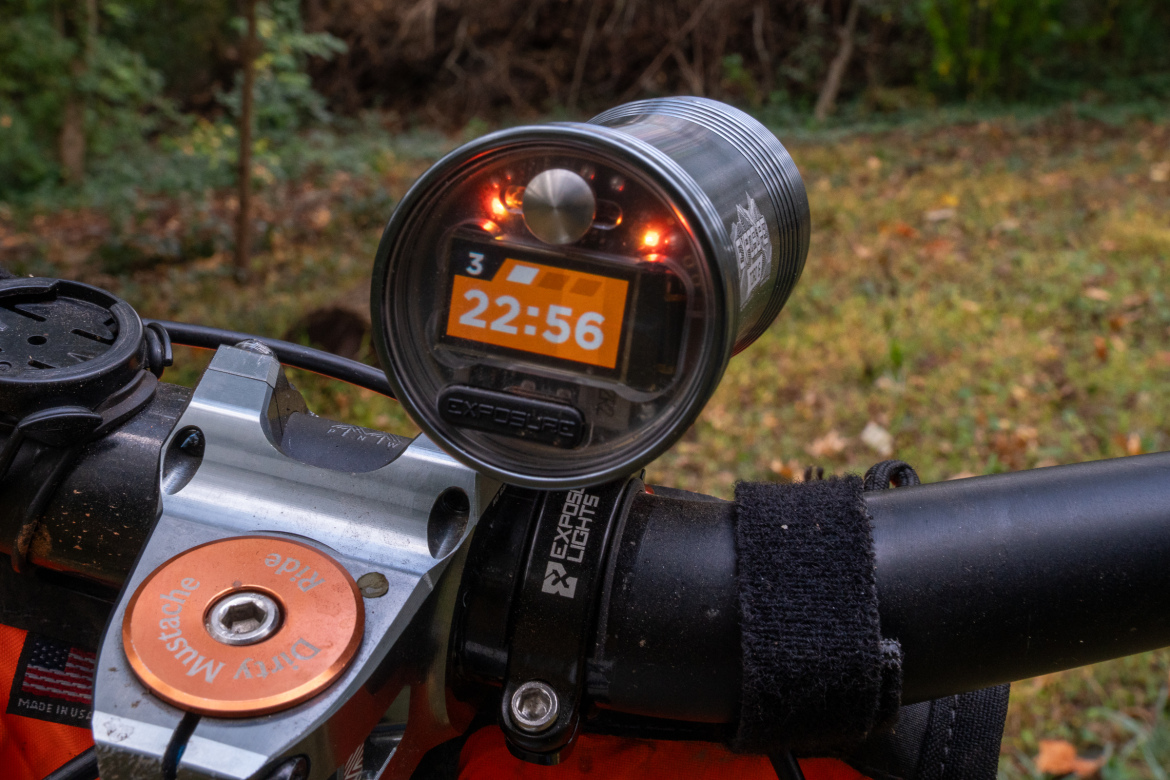
A crisp OLED display shows how much runtime is left
The Exposure Toro 16 bike light has a small OLED screen on the back that displays an estimate for remaining runtime. It’s also useful for making adjustments to the light. Like many other bike lights I’ve tested, the Toro 16 has just a single button for turning on the light, switching modes, and selecting different programs. A long press does this, a short press does that, and a very long press does another thing. Personally, I find this setup confusing and frustrating.
Fortunately, the LED screen on the Toro lets you know what’s happening through a series of text and icons. The orientation of the display even flips depending on how you have the light mounted, which is a smart touch.
The display is always on, so you can see the runtime at a glance, though friends have wondered how much power the display itself is draining from the battery. It’s surely not as much as the LED bulbs out front, and I know from trying to photograph the display for this review that it’s actually flickering on and off several times a second, which likely minimizes its power draw.
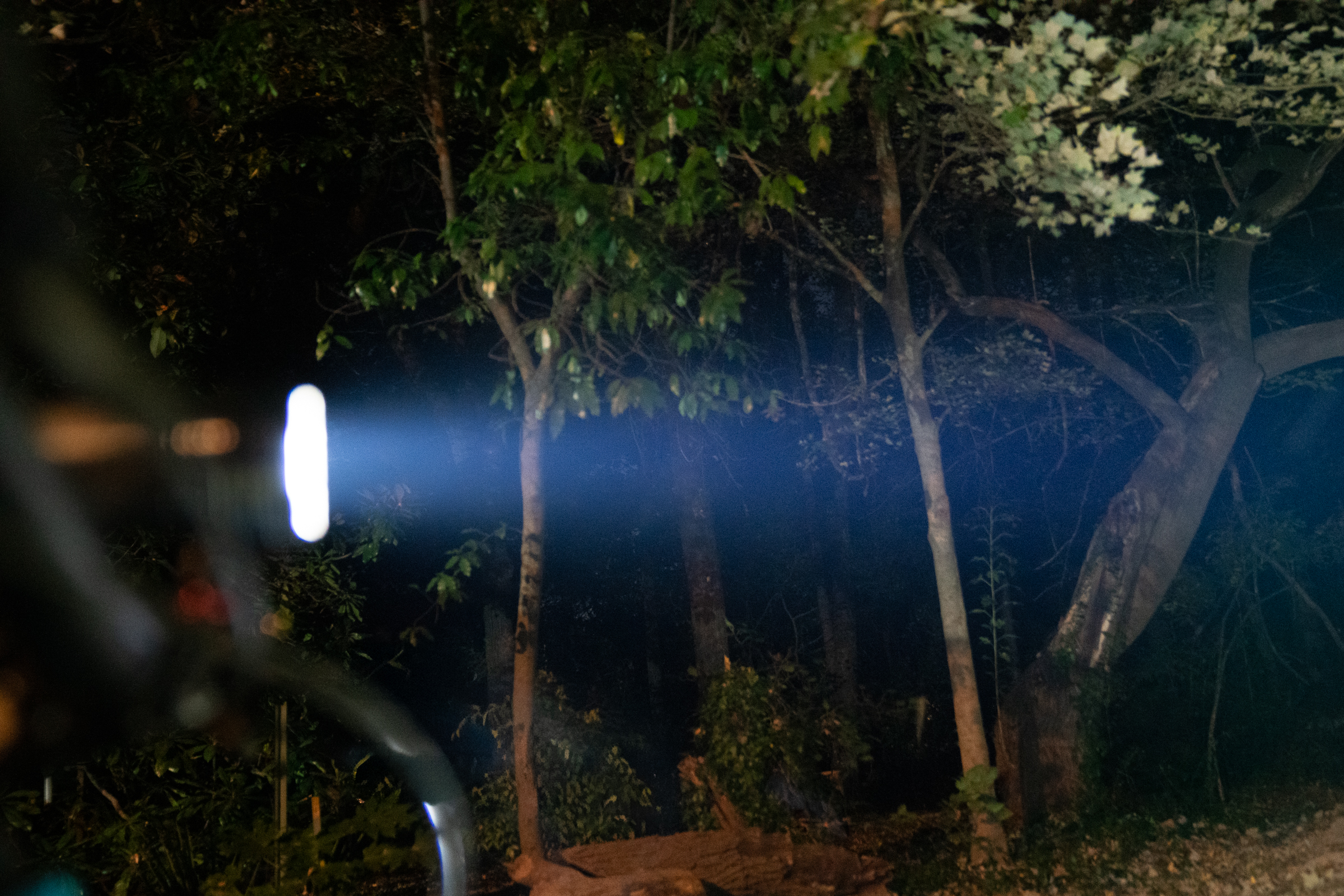
A bright light with a big battery
The Exposure Toro 16 is capable of producing up to 3,850 lumens of brightness, though it only delivers that on Reflex mode if the light determines you actually need it. Otherwise, the brightest constant mode delivers 2,590 lumens with about a two-hour runtime.
Within the Exposure light lineup, the Toro 16 is positioned as a light that is optimized for gravel and XC riding, though it works well for trail riding too. The $485 Exposure MaXx-D 17 delivers up to 4,850 lumens and is optimized for trail riding, while the big boy — the $540 Six Pack 15 — pumps out a massive 6,000 lumens for DH riding. For trail riding at night, I found the Toro 16 more than capable, especially given its price and weight.
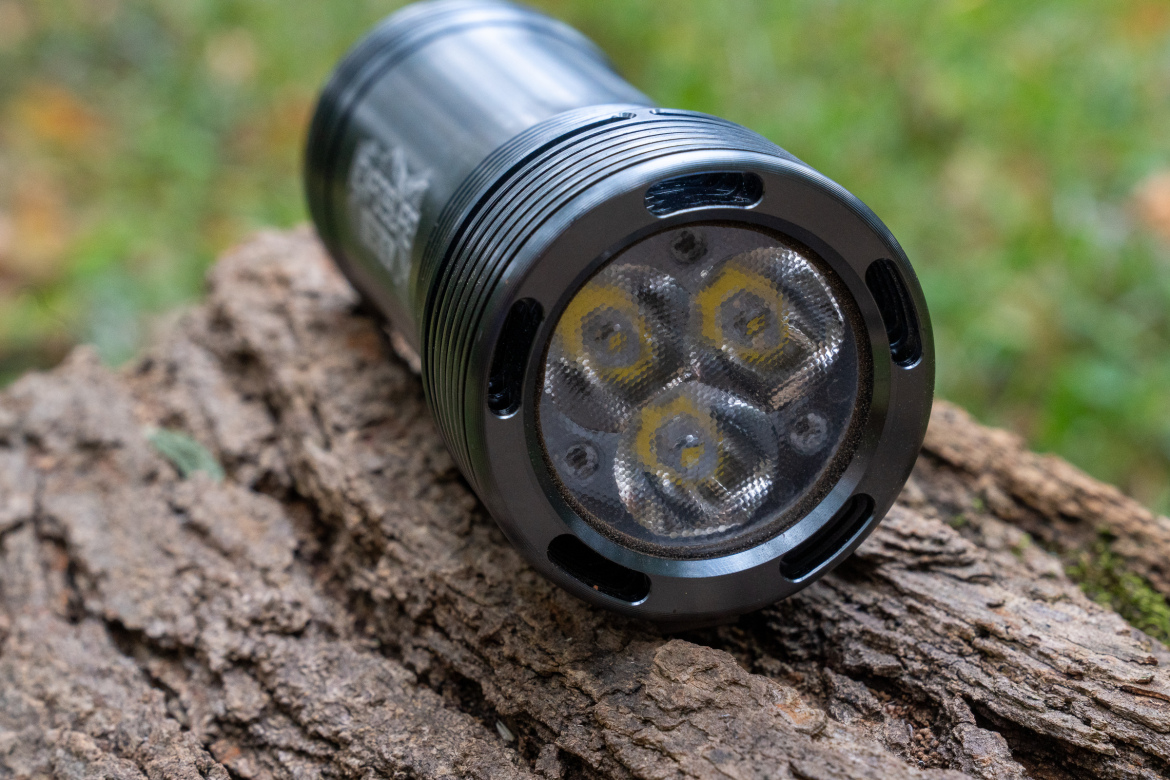
At the other end of the brightness spectrum, the Exposure Toro 16 has a 155-lumen setting, and supposedly the battery will last for 36 hours at that brightness level. It’s hard to imagine, but when I started night riding regularly, I rode with a single, 120-lumen helmet lamp, albeit pretty slowly. So I suppose for a multi-day bikepacking trip, the low setting could work for riding slow and steady.
With three LED bulbs, the Toro 16 delivers a round beam pattern to maximize distance. For a more ovalized beam pattern, buyers will want to consider the Maxx-D, which lights up more of the trail periphery.
Once the Toro 16 battery is drained, it’s not really drained. Exposure provides a reserve mode that kicks in with an extra 30 minutes of “low light” that should hopefully get you back to your car.
The Exposure Toro 16 charges with a USB-C cable (yay!), and it ships with a high-power, 40W charging brick that tops the battery off in about three hours.
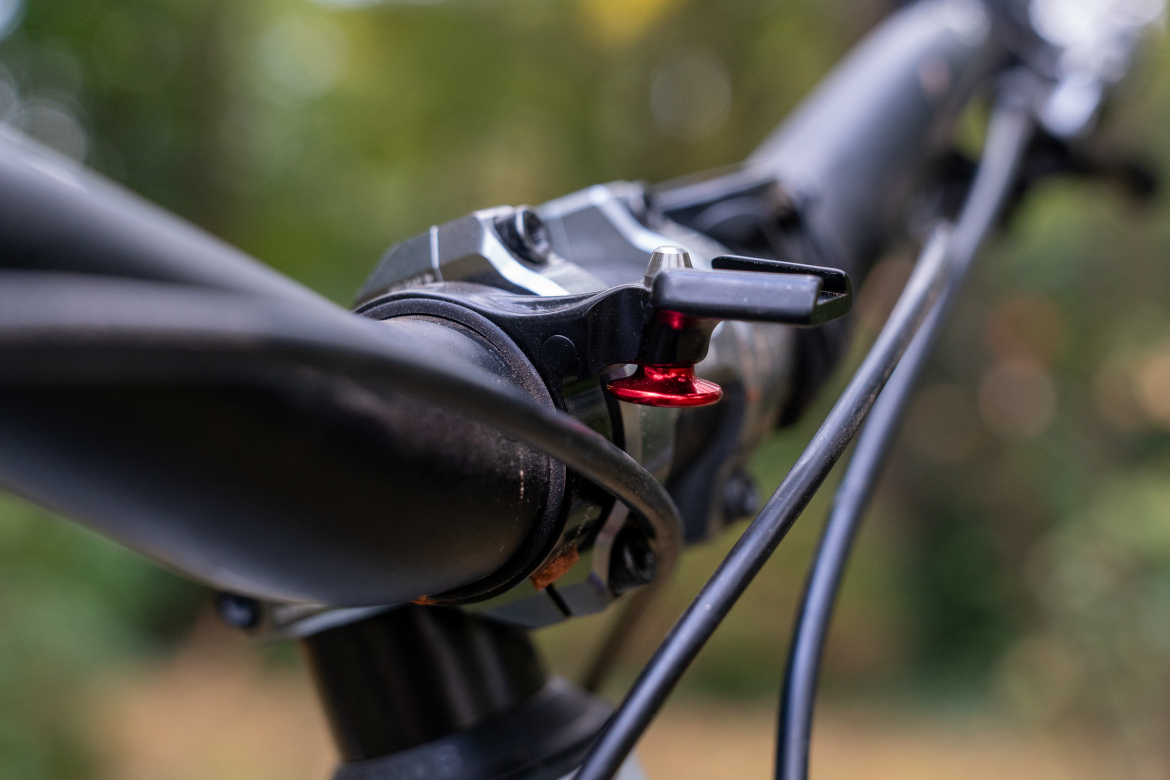
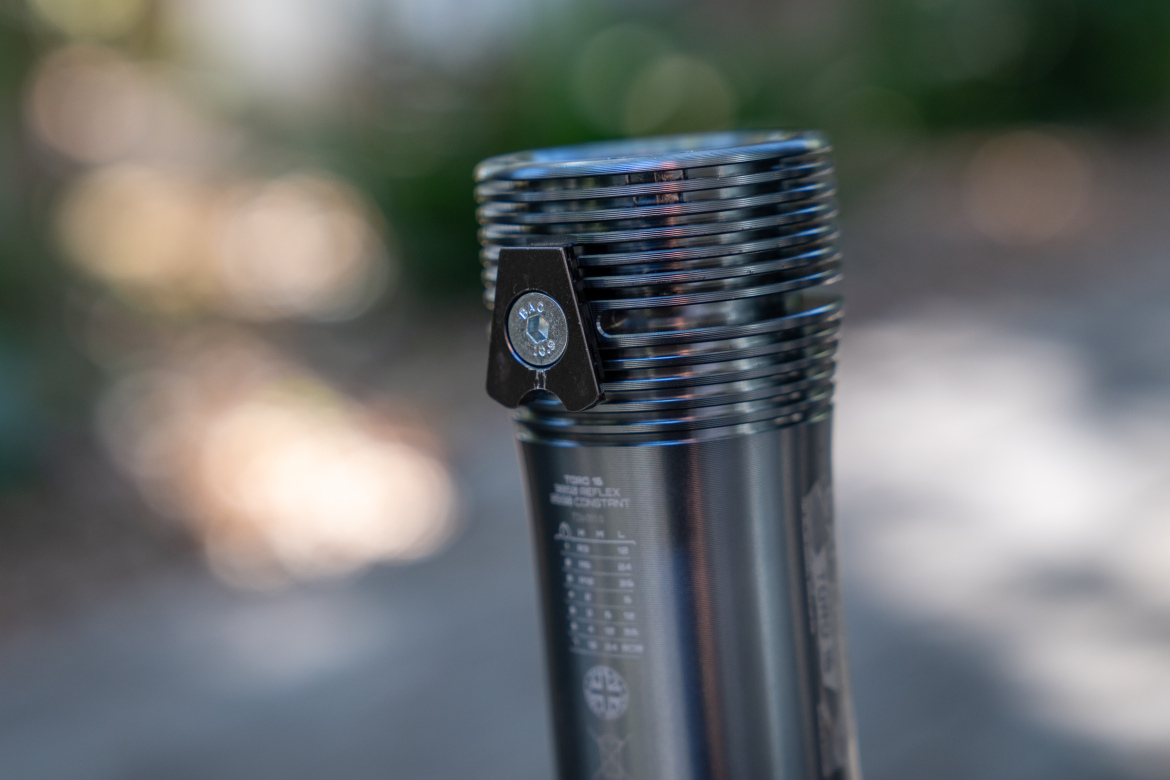
Mounting the Exposure Toro 16
The Exposure Toro 16 ships with a handlebar mount that fits most bar sizes. I attached mine to 35mm bars and found an easy and secure fit. The mount is a quality piece of hardware with a spring-loaded button that locks the light tight into the mount.
The Toro has a trapezoidal piece attached with a 3mm bolt that fits into the mount for a solid connection. The problem is that if the light gets bumped or you don’t secure the 3mm bolt tightly enough, the light won’t stay fixed and will start to rotate while riding. I was able to prevent this by over-tightening the bolt, and I suspect adding a bit of threadlocker would also do the trick. The good thing about the design is that the horizontal angle can be adjusted, say if you’re mounting it at a weird bend in your handlebars and want the light to shine straight ahead.
Though the form factor suggests you could mount the Toro 16 to a helmet, it’s just too heavy for that to be comfortable, and Exposure doesn’t offer a helmet mount for this light. They do have a stem-bolt mount kit that looks promising, though I wasn’t able to test it.
Pros and cons of Exposure Toro 16
Pros
- Reflex mode works as advertised and lets you ride fast at night without killing the battery
- Quality construction and materials
- OLED display is handy for checking battery life and adjusting settings
- USB-C charging and the ability to use it as a power bank
Cons
- The mount can loosen, so bring along a 3mm wrench
Bottom line
The Exposure Toro 16 is an intelligent, high-quality bike light for trail riding at night.

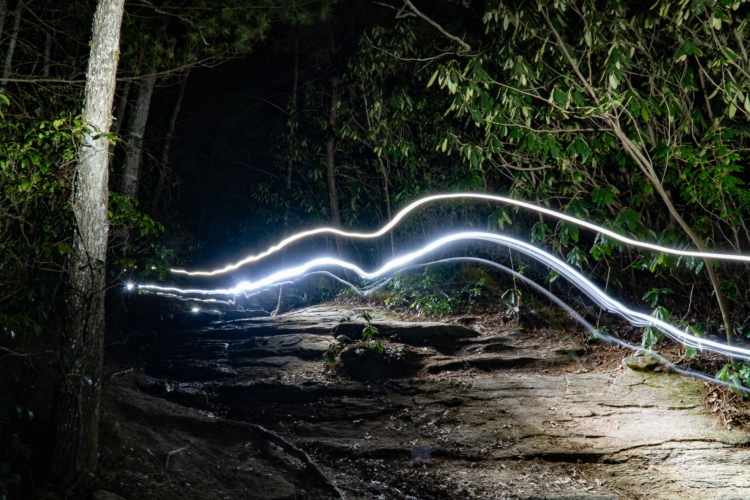


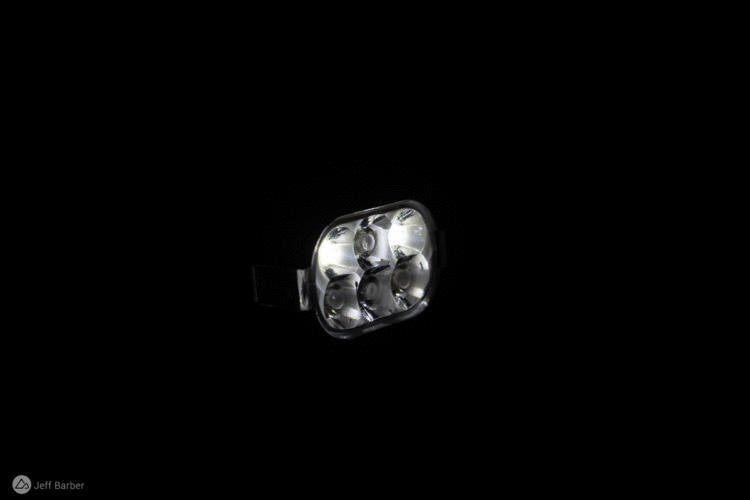
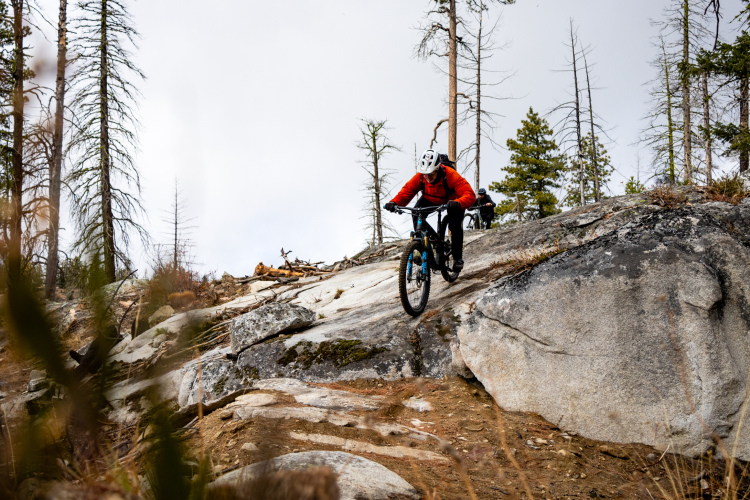
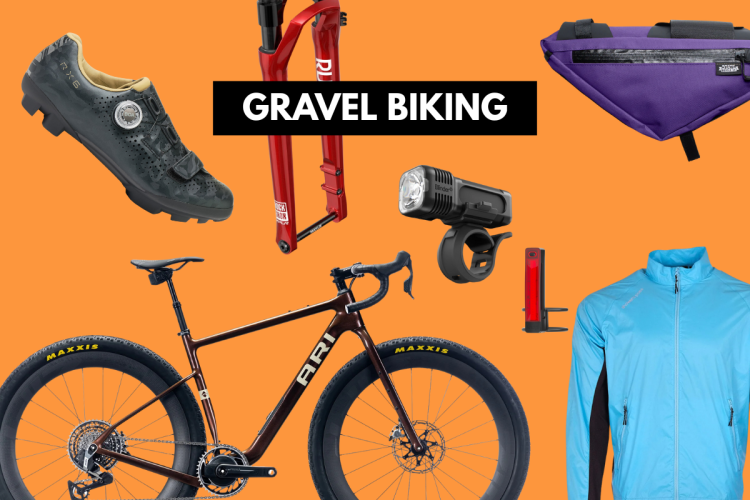
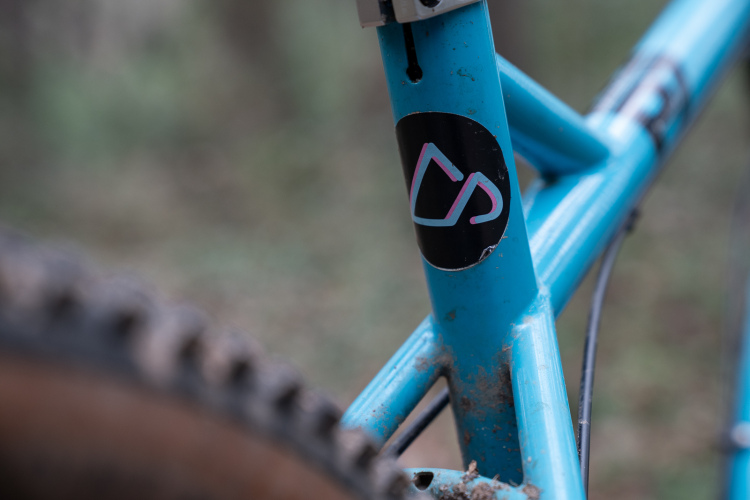


0 Comments